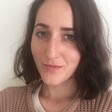Rights and Accountability 21 July 2015

Residents of Susiya have endured a series of demolitions,
ActiveStillsThroughout Ramadan, most Palestinians look forward to Eid al-Fitr, the feast that marks the end of a month of fasting. But the residents of Susiya in the South Hebron Hills have dreaded the month’s conclusion: Israel has stated that after Ramadan, it would begin to demolish the village.
Since the Israeli high court struck down the residents’ petition to prohibit further demolitions in May, the village has been at risk of total destruction.
About half of the village’s structures are slated for demolition at any moment. This half consists of 10 residential homes, one clinic, eight animal shelters and 12 other structures.
The residents of Susiya — home to 340 people — expect these structures to be demolished before the high court begins an appeal hearing, which is scheduled for 3 August.
According to media reports, villagers met Israeli officials overseeing the West Bank’s military occupation last week to try to reach an agreement under which the residents would be relocated without forced demolitions. During the meeting, the military officials reportedly suggested they were under pressure from Israeli settlers to relocate the villagers.
Exceptional outrage
The impending demolition of Susiya has garnered unusual resistance from Israel’s staunchest ally, the United States. John Kirby, the US State Department spokesperson, described the proposed demolitions as “harmful and provocative” and stated “we strongly urge the Israeli authorities to refrain from carrying out any demolitions in the village.”
Kirby also said “we are concerned that the demolitions … would set a damaging standard for displacement and land confiscation.”
Susiya is in the 60 percent of the West Bank designated as “Area C” under the 1993 Oslo accords. This means it is under full Israeli administrative and military control.
Destruction and demolition in Area C, as in the rest of the occupied West Bank, including East Jerusalem, is not just a provocative move. It is one that violates international law, which prohibits the forced displacement or transfer of civilians and the destruction of private property.
Nonetheless, the Israeli military routinely carries out demolitions in Area C, displacing families at a high rate.
The European Union has also condemned the pending evictions. In June, representatives from all 28 EU member states arrived in the village to show their collective opposition to Israel’s plan.
But on 19 July, Nasser Nawajeh, a resident of the village and a fieldworker for the Israeli human rights group B’Tselem, wrote to the EU’s foreign policy chief Federica Mogherini, challenging the Union to suspend trade agreements with Israel until it upholds international law. Under a legally-binding “association agreement” that came into effect in 2000, the EU may only deepen its relationship with Israel if human rights are respected.
Record of displacement
Since the mid 1980s, the people of Susiya have been repeatedly displaced.
In 1986, the original location of the village was declared an “archeological site” and the land confiscated for “public purposes,” forcing the residents to move to a nearby area. In 2001, this village was destroyed by the Israeli army in an act of collective punishment following the murder of a man from an Israeli settlement, also named Susiya.
Following 2001, the Civil Administration — the name Israel gives to the body administering its military occupation of the West Bank — would regularly issue demolition orders for the village’s temporary structures. Built without permits, those structures were erected to take care of their livestock and shelter the residents.
During this same period, the villagers’ access to their land was significantly restricted by a proliferation of Israeli “outposts” — settlements that are illegal even according to Israeli law.
Through the threat of violence, settlers have prevented the residents from accessing around 300 hectares (1 square mile) of land that includes numerous water cisterns. Settlers have been documented cutting down olive trees, stealing crops and damaging property.
Since 2007, the Palestinian residents of Susiya have lodged 126 complaints with the Israeli police in Hebron. Nearly all have been closed without any charges being brought.
In 2013, the Civil Administration finally rejected a master plan that was proposed by the organization Rabbis for Human Rights. The occupation authority stated in its explanation for rejecting the proposed plan that it intended to transfer the people of Susiya to Yatta, another West Bank village.
Yatta is in Area A, which is nominally under the Palestinian Authority’s control.
The Civil Administration argued that transferring the Susiya villagers to Yatta would be beneficial to Susiya’s residents:
We see the current [master] plan as yet another attempt to keep a poor, downtrodden population from advancing; from choosing between partial income and other resources; it is an attempt to prevent the Palestinian woman from breaking the cycle of poverty and depriving her of educational and professional opportunities. Similarly, by sentencing the Palestinian child to life in a small, stultified village with no means for development, the plan keeps the child from being aware of all the opportunities available to any other person. It is our recommendation that the plan be rejected out of hand.
Following the Civil Administration’s rejection of the master plan, Rabbis for Human Rights petitioned the Israeli high court to overturn the decision.
But in May, the court sided with the occupation authorities, chastising Susiya’s residents for “taking the law into their own hands” and continuing to build without permits. That verdict overlooked how it is Israeli settlers and the Israeli authorities that are violating international law, not the indigenous Palestinians.
Israel’s highest court has echoed the views of Yochai Damri, a settler leader in the area, who hopes to take over the vacated village. Speaking to UK newspaper The Independent, Damri described the Susiya villagers as “criminals who invaded an area that doesn’t belong to them.”






Comments
Susiya
Permalink Rob Roy replied on
The world stands by while Israel escalates its criminality daily. Instead of the U.S. cutting off its supply of money being fed to Israel even in the face of endless war crimes, it proposes to add another 1.5 billion to placate that terrorist state for the Iran deal. When will this support for these criminals end? What will it take? Israelis continue to take land that legally belongs to Palestinians and blame the Palestinians for their own destruction. Reminds me of something....
Attack on Susiya, Palestine by Israel
Permalink James Bettendorf replied on
Call your Congressional Representative now! Show the Israeli government that they cannot ignore International law and human rights with impunity.